1. Hille B. 2001. Ion channels of excitable membranes. 3rd ed. Sinauer Associates;Sunderland (MA):
2. Barhanin J, Lesage F, Guillemare E, Fink M, Lazdunski M, Romey G. 1996; K(V)LQT1 and lsK (minK) proteins associate to form the I(Ks) cardiac potassium current. Nature. 384:78–80. DOI:
10.1038/384078a0. PMID:
8900282.
3. Biervert C, Schroeder BC, Kubisch C, Berkovic SF, Propping P, Jentsch TJ, Steinlein OK. 1998; A potassium channel mutation in neonatal human epilepsy. Science. 279:403–406. DOI:
10.1126/science.279.5349.403. PMID:
9430594.

4. Charlier C, Singh NA, Ryan SG, Lewis TB, Reus BE, Leach RJ, Leppert M. 1998; A pore mutation in a novel KQT-like potassium channel gene in an idiopathic epilepsy family. Nat Genet. 18:53–55. DOI:
10.1038/ng0198-53. PMID:
9425900.

5. Delmas P, Brown DA. 2005; Pathways modulating neural KCNQ/M (Kv7) potassium channels. Nat Rev Neurosci. 6:850–862. DOI:
10.1038/nrn1785. PMID:
16261179.

6. Nelson MT, Quayle JM. 1995; Physiological roles and properties of potassium channels in arterial smooth muscle. Am J Physiol. 268(4 Pt 1):C799–C822. DOI:
10.1152/ajpcell.1995.268.4.C799. PMID:
7733230.

7. Jepps TA, Olesen SP, Greenwood IA. 2013; One man's side effect is another man's therapeutic opportunity: targeting Kv7 channels in smooth muscle disorders. Br J Pharmacol. 168:19–27. DOI:
10.1111/j.1476-5381.2012.02133.x. PMID:
22880633. PMCID:
PMC3569999.

8. Stott JB, Jepps TA, Greenwood IA. 2014; K(V)7 potassium channels: a new therapeutic target in smooth muscle disorders. Drug Discov Today. 19:413–424. DOI:
10.1016/j.drudis.2013.12.003. PMID:
24333708.

9. Haick JM, Byron KL. 2016; Novel treatment strategies for smooth muscle disorders: targeting Kv7 potassium channels. Pharmacol Ther. 165:14–25. DOI:
10.1016/j.pharmthera.2016.05.002. PMID:
27179745.

11. Cellek S, Cameron NE, Cotter MA, Fry CH, Ilo D. 2014; Microvascular dysfunction and efficacy of PDE5 inhibitors in BPH-LUTS. Nat Rev Urol. 11:231–241. DOI:
10.1038/nrurol.2014.53. PMID:
24619381.

12. Yafi FA, Jenkins L, Albersen M, Corona G, Isidori AM, Goldfarb S, Maggi M, Nelson CJ, Parish S, Salonia A, Tan R, Mulhall JP, Hellstrom WJ. 2016; Erectile dysfunction. Nat Rev Dis Primers. 2:16003. DOI:
10.1038/nrdp.2016.3. PMID:
27188339. PMCID:
PMC5027992.

13. Mónica FZ, Antunes E. 2018; Stimulators and activators of soluble guanylate cyclase for urogenital disorders. Nat Rev Urol. 15:42–54. DOI:
10.1038/nrurol.2017.181. PMID:
29133940.

14. Lee JH, Chae MR, Kang SJ, Sung HH, Han DH, So I, Park JK, Lee SW. 2020; Characterization and functional roles of KCNQ-encoded voltage-gated potassium (Kv7) channels in human corpus cavernosum smooth muscle. Pflugers Arch. 472:89–102. DOI:
10.1007/s00424-019-02343-7. PMID:
31919767.

15. Abbott GW, Sesti F, Splawski I, Buck ME, Lehmann MH, Timothy KW, Keating MT, Goldstein SA. 1999; MiRP1 forms IKr potassium channels with HERG and is associated with cardiac arrhythmia. Cell. 97:175–187. DOI:
10.1016/S0092-8674(00)80728-X. PMID:
10219239.

17. Jepps TA, Carr G, Lundegaard PR, Olesen SP, Greenwood IA. 2015; Fundamental role for the KCNE4 ancillary subunit in Kv7.4 regulation of arterial tone. J Physiol. 593:5325–5340. DOI:
10.1113/JP271286. PMID:
26503181. PMCID:
PMC4704525.

19. Yeung SY, Pucovský V, Moffatt JD, Saldanha L, Schwake M, Ohya S, Greenwood IA. 2007; Molecular expression and pharmacological identification of a role for K(v)7 channels in murine vascular reactivity. Br J Pharmacol. 151:758–770. DOI:
10.1038/sj.bjp.0707284. PMID:
17519950.

20. Panaghie G, Tai KK, Abbott GW. 2006; Interaction of KCNE subunits with the KCNQ1 K+ channel pore. J Physiol. 570(Pt 3):455–467. DOI:
10.1113/jphysiol.2005.100644. PMID:
16308347.
21. Strutz-Seebohm N, Seebohm G, Fedorenko O, Baltaev R, Engel J, Knirsch M, Lang F. 2006; Functional coassembly of KCNQ4 with KCNE-beta- subunits in Xenopus oocytes. Cell Physiol Biochem. 18:57–66. DOI:
10.1159/000095158. PMID:
16914890.
22. Roura-Ferrer M, Etxebarria A, Solé L, Oliveras A, Comes N, Villarroel A, Felipe A. 2009; Functional implications of KCNE subunit expression for the Kv7.5 (KCNQ5) channel. Cell Physiol Biochem. 24:325–334. DOI:
10.1159/000257425. PMID:
19910673.

24. Seefeld MA, Lin H, Holenz J, Downie D, Donovan B, Fu T, Pasikanti K, Zhen W, Cato M, Chaudhary KW, Brady P, Bakshi T, Morrow D, Rajagopal S, Samanta SK, Madhyastha N, Kuppusamy BM, Dougherty RW, Bhamidipati R, Mohd Z, et al. 2018; Novel KV7 ion channel openers for the treatment of epilepsy and implications for detrusor tissue contraction. Bioorg Med Chem Lett. 28:3793–3797. DOI:
10.1016/j.bmcl.2018.09.036. PMID:
30327146.

25. Ng FL, Davis AJ, Jepps TA, Harhun MI, Yeung SY, Wan A, Reddy M, Melville D, Nardi A, Khong TK, Greenwood IA. 2011; Expression and function of the K+ channel KCNQ genes in human arteries. Br J Pharmacol. 162:42–53. DOI:
10.1111/j.1476-5381.2010.01027.x. PMID:
20840535.

26. Mackie AR, Brueggemann LI, Henderson KK, Shiels AJ, Cribbs LL, Scrogin KE, Byron KL. 2008; Vascular KCNQ potassium channels as novel targets for the control of mesenteric artery constriction by vasopressin, based on studies in single cells, pressurized arteries, and in vivo measurements of mesenteric vascular resistance. J Pharmacol Exp Ther. 325:475–483. DOI:
10.1124/jpet.107.135764. PMID:
18272810. PMCID:
PMC2597077.

28. Myeong J, Kwak M, Hong C, Jeon JH, So I. 2014; Identification of a membrane-targeting domain of the transient receptor potential canonical (TRPC)4 channel unrelated to its formation of a tetrameric structure. J Biol Chem. 289:34990–35002. DOI:
10.1074/jbc.M114.584649. PMID:
25349210. PMCID:
PMC4263895.

29. Erickson MG, Alseikhan BA, Peterson BZ, Yue DT. 2001; Preassociation of calmodulin with voltage-gated Ca(2+) channels revealed by FRET in single living cells. Neuron. 31:973–985. DOI:
10.1016/S0896-6273(01)00438-X. PMID:
11580897.

30. Epe B, Steinhäuser KG, Woolley P. 1983; Theory of measurement of Förster-type energy transfer in macromolecules. Proc Natl Acad Sci U S A. 80:2579–2583. DOI:
10.1073/pnas.80.9.2579. PMID:
16593305. PMCID:
PMC393869.
31. Patterson G, Day RN, Piston D. 2001; Fluorescent protein spectra. J Cell Sci. 114(Pt 5):837–838. PMID:
11181166.

32. Hoshi T, Zagotta WN, Aldrich RW. 1991; Two types of inactivation in Shaker K+ channels: effects of alterations in the carboxy-terminal region. Neuron. 7:547–556. DOI:
10.1016/0896-6273(91)90367-9. PMID:
1931050.

33. Brueggemann LI, Haick JM, Cribbs LL, Byron KL. 2014; Differential activation of vascular smooth muscle Kv7.4, Kv7.5, and Kv7.4/7.5 channels by ML213 and ICA-069673. Mol Pharmacol. 86:330–341. DOI:
10.1124/mol.114.093799. PMID:
24944189. PMCID:
PMC4152906.

35. Rodriguez-Menchaca AA, Adney SK, Tang QY, Meng XY, Rosenhouse-Dantsker A, Cui M, Logothetis DE. 2012; PIP2 controls voltage-sensor movement and pore opening of Kv channels through the S4-S5 linker. Proc Natl Acad Sci U S A. 109:E2399–E2408. DOI:
10.1073/pnas.1207901109. PMID:
22891352. PMCID:
PMC3437867.

36. Zaydman MA, Cui J. 2014; PIP2 regulation of KCNQ channels: biophysical and molecular mechanisms for lipid modulation of voltage-dependent gating. Front Physiol. 5:195. DOI:
10.3389/fphys.2014.00195. PMID:
24904429. PMCID:
PMC4034418.

37. Suh BC, Inoue T, Meyer T, Hille B. 2006; Rapid chemically induced changes of PtdIns(4,5)P2 gate KCNQ ion channels. Science. 314:1454–1457. DOI:
10.1126/science.1131163. PMID:
16990515. PMCID:
PMC3579521.

38. Li Y, Gamper N, Hilgemann DW, Shapiro MS. 2005; Regulation of Kv7 (KCNQ) K+ channel open probability by phosphatidylinositol 4,5-bisphosphate. J Neurosci. 25:9825–9835. DOI:
10.1523/JNEUROSCI.2597-05.2005. PMID:
16251430. PMCID:
PMC6725574.

39. Lerche C, Scherer CR, Seebohm G, Derst C, Wei AD, Busch AE, Steinmeyer K. 2000; Molecular cloning and functional expression of KCNQ5, a potassium channel subunit that may contribute to neuronal M-current diversity. J Biol Chem. 275:22395–22400. DOI:
10.1074/jbc.M002378200. PMID:
10787416.

40. Li Y, Gamper N, Shapiro MS. 2004; Single-channel analysis of KCNQ K+ channels reveals the mechanism of augmentation by a cysteine-modifying reagent. J Neurosci. 24:5079–5090. DOI:
10.1523/JNEUROSCI.0882-04.2004. PMID:
15175377. PMCID:
PMC6729199.

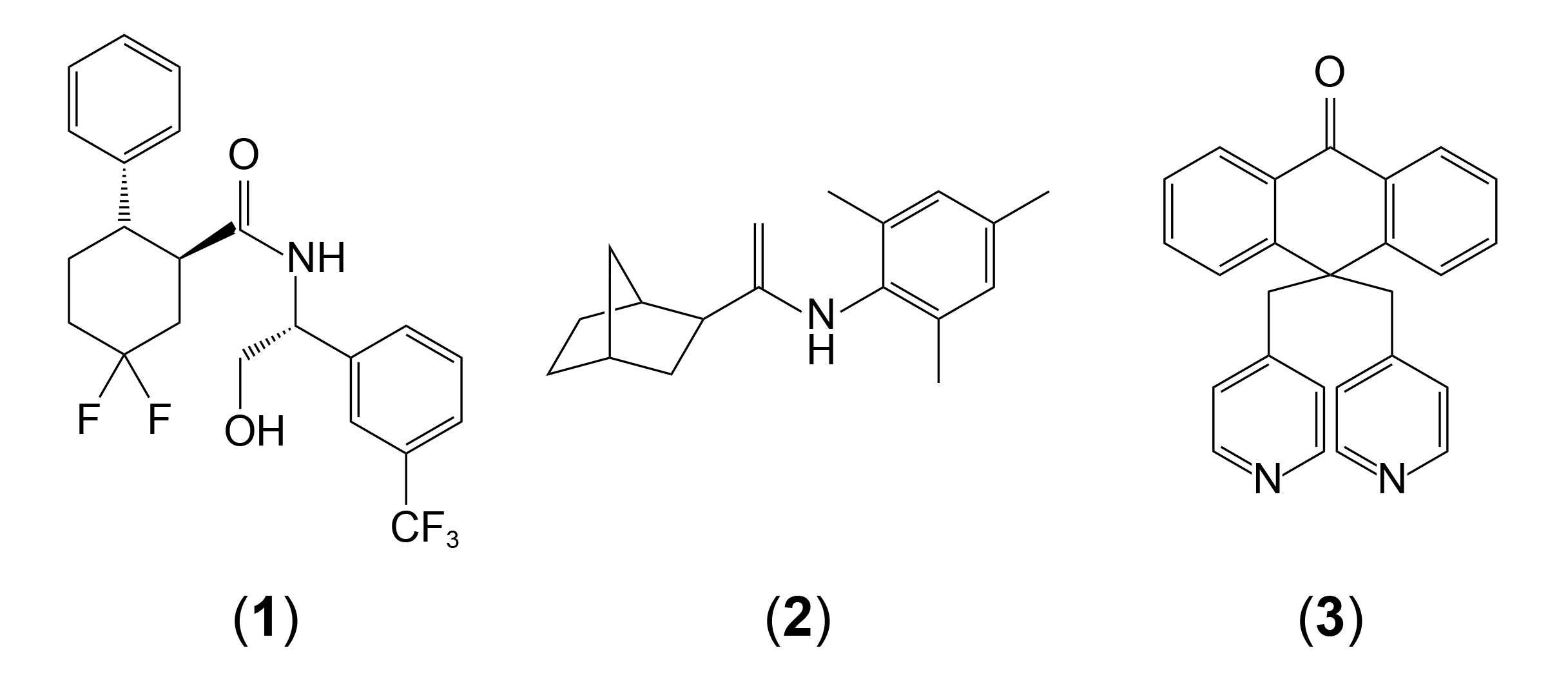
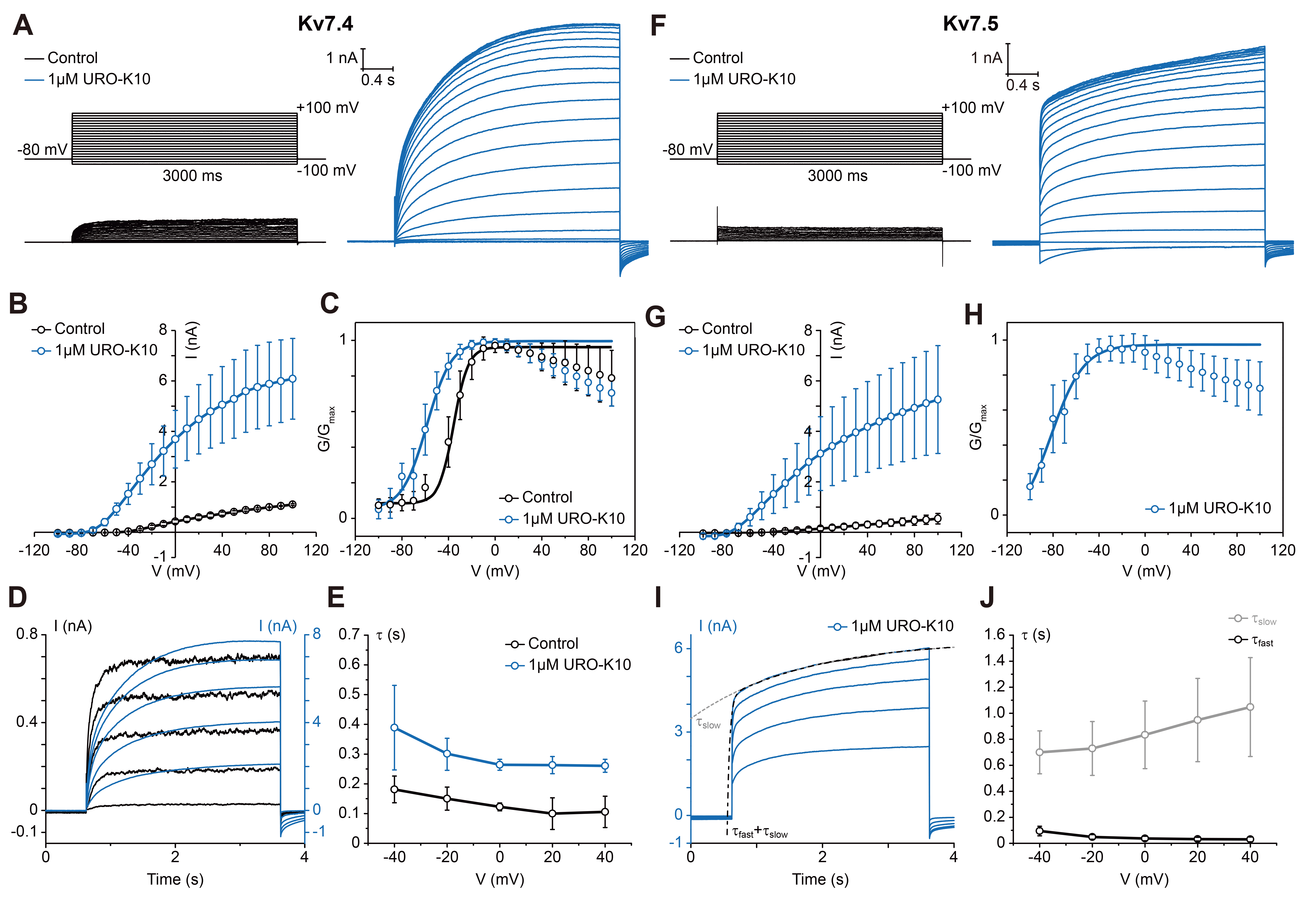
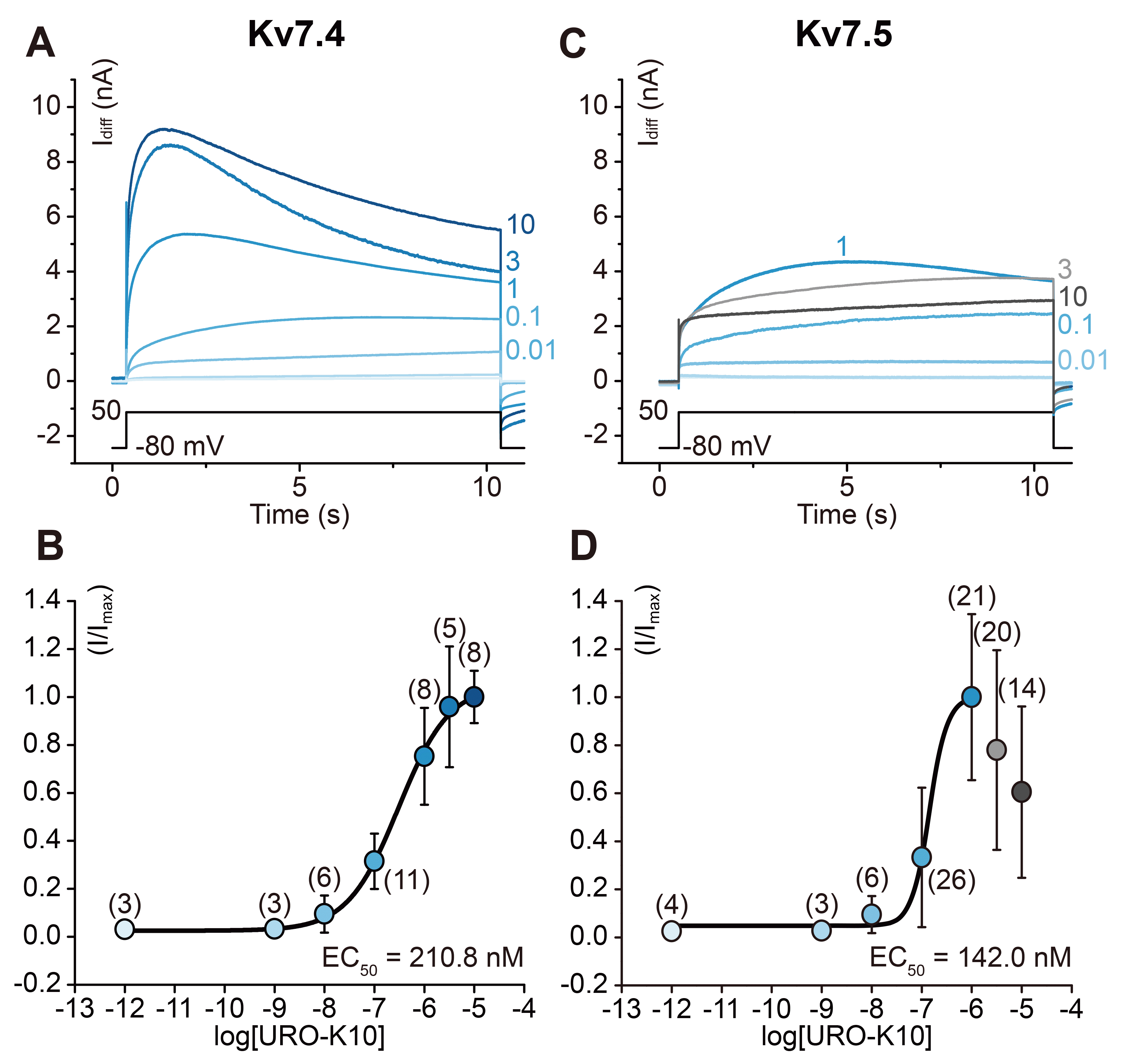
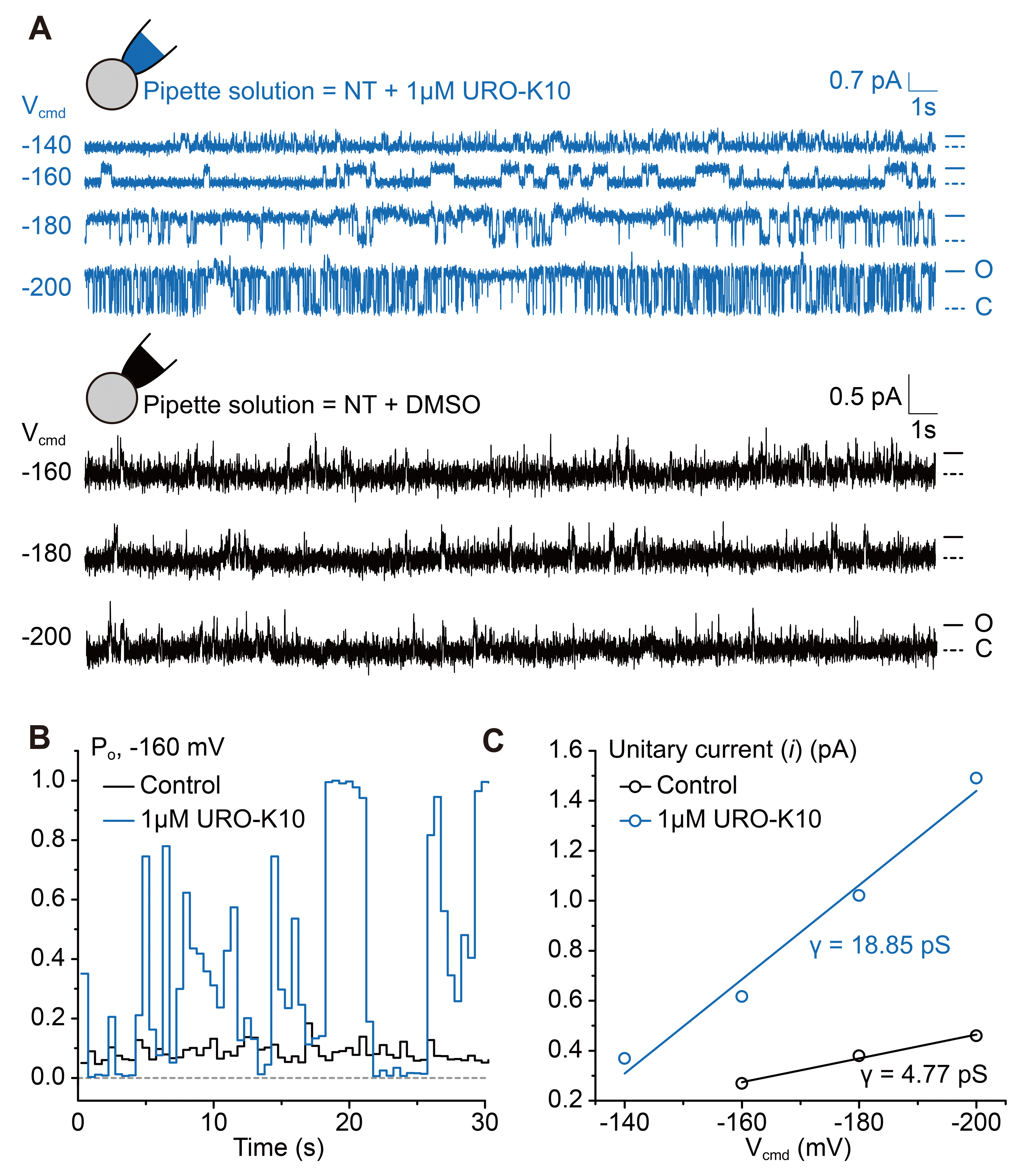
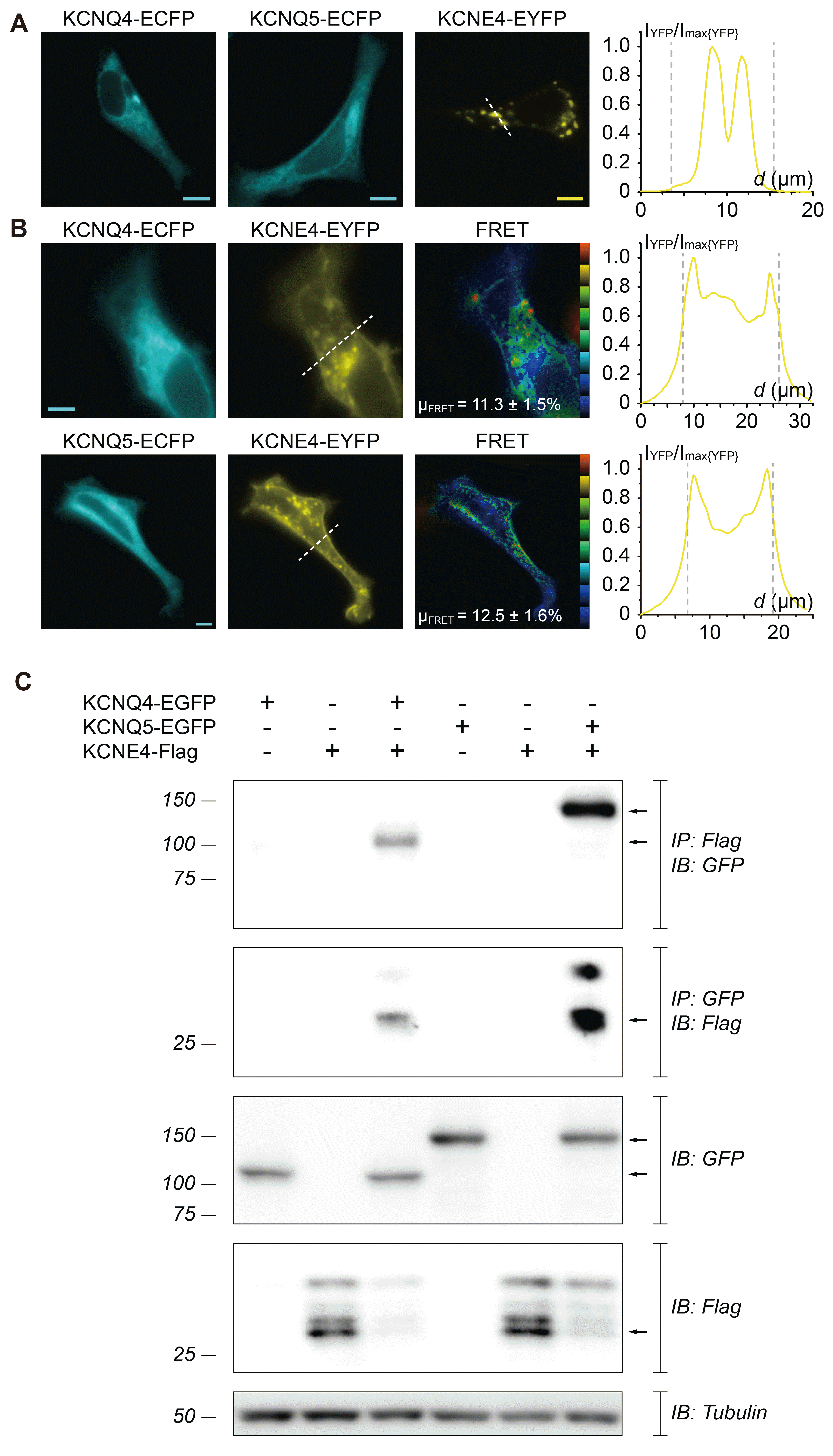
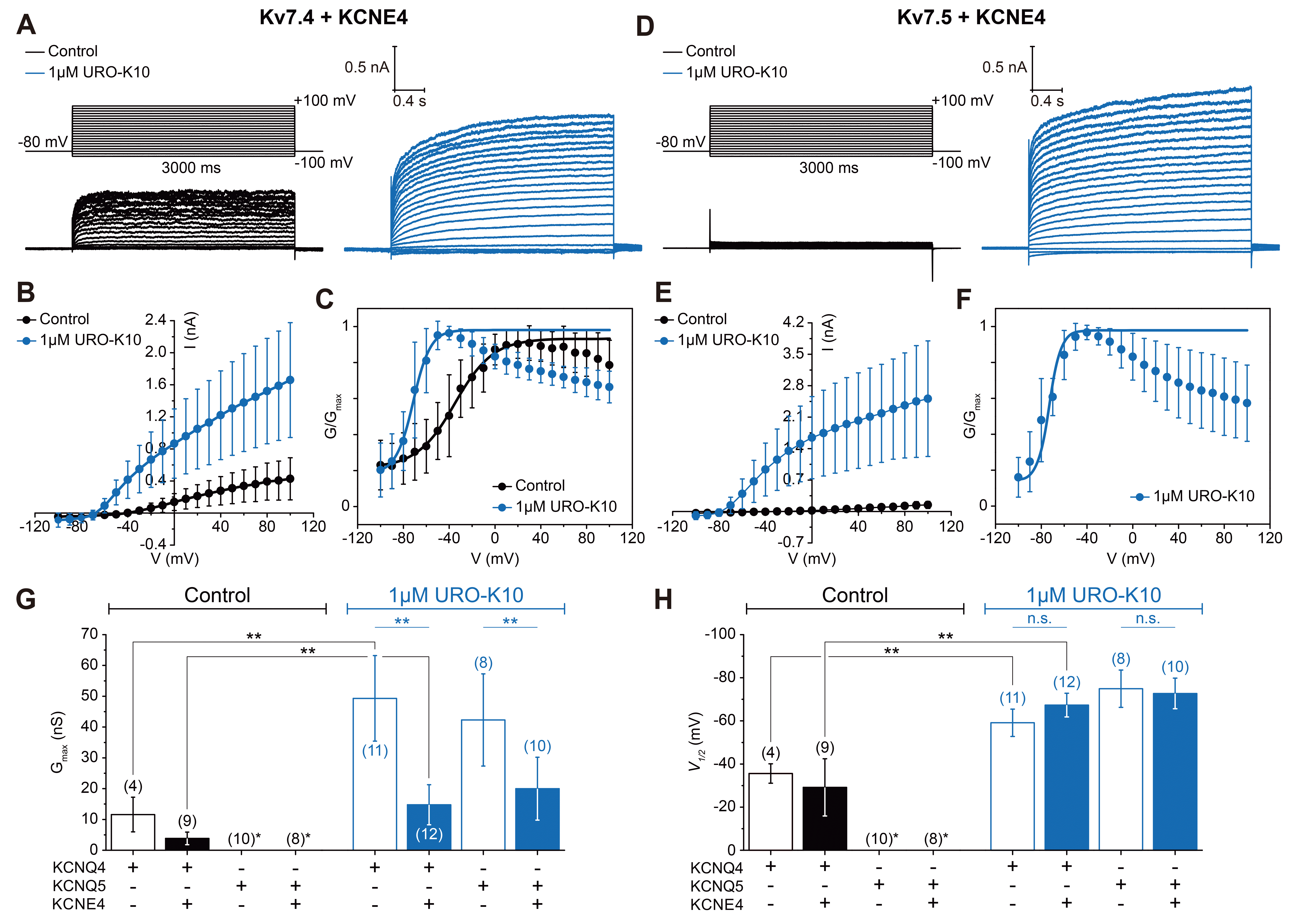
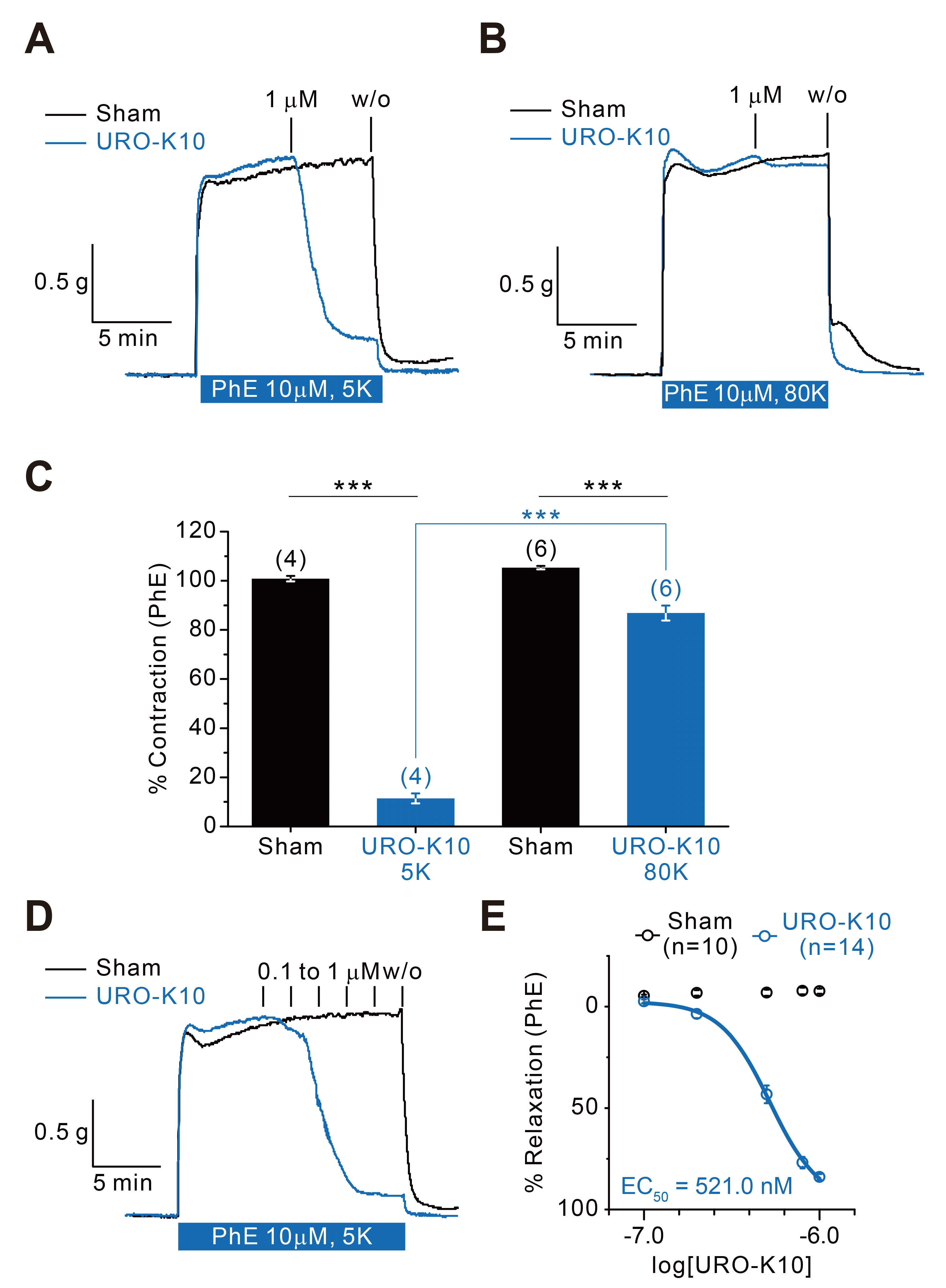




 PDF
PDF Citation
Citation Print
Print


 XML Download
XML Download